|
Contemporary use of this phrasing often alludes to engaging in a certain experience with a calm state of attentiveness, guided by intuition rather conscious thought or effort. It is also interpreted as the activity itself allows a practitioner to achieve a calmed state by engaging in the activity. While the Western interpretation of Zen may be more of a mix of Buddhism, Taoism, and Confucianism influences, it’s roots first sprouted in Zen Buddhism in the 5th century CE. Zen Buddhism focuses heavily on the use of meditation to achieve enlightenment and understanding “the meaning of life”. Many tree climbers experience a state of peace and tranquility when they are high in the branches above. Having a calmed state of mind when sitting in the top of a tree lends itself to practicing mindfulness and meditation. Given meditation involves clearing the mind, the climbing process itself can provide a point of focus, resulting in one’s mind letting go of the everyday worries and concerns that plague our thoughts in our daily routine. Therefore, some people see climbing as meditative in its nature. The Path to Enlightenment In their simplest forms, “The Zen of”, Zen Buddhism, and any of the branches or schools of Buddhism are focused on reaching enlightenment; or attaining the full comprehension of the true nature of all things and life itself. The original Buddha put forth that life is filled with struggle & suffering, which occur when we harbor desires, are guided by our ego, or behave in immoral ways. He went on to present a path we can follow to reduce suffering and find ultimate happiness and inner peace. This path is the noble Eightfold Path. Through following the behaviors in the Eightfold Path, one can escape the suffering associated with the human experience. Escape suffering, reach nirvana, become enlightened. Zen Buddhism emphasizes the practice of meditation as being the key to reaching enlightenment, whereas meditation is just one of the 8 steps put forth by the Buddha. The 8 components in the Eightfold Path include having the right:
Upon considering “the Zen of Tree Climbing”, I find a natural how the philosophical principles in the Eightfold Path are manifested in the tree climbing process.  Climbing the Eightfold Path RIGHT VIEW: Having the right view refers to having the understanding that your actions have consequences, which can lead to suffering. Therefore, you should pursue the knowledge that will help you see and understand things as they really are as this will help you steer clear of suffering. If you can picture yourself standing at the base of a tall tree, looking up at the branches high above, it’d likely strike you that climbing the tree could result in injury. Most of us are not as carefree, or oblivious to consequences as we were as kids. Knowing there is risk involved is usually enough reason for many people to not even consider heading up. With a little training and knowledge however, we can learn what we can look for and how to read subtle details to determine if a tree is suitable for climbing. We can also use this knowledge to make determinations on how to climb the tree while minimizing our risks for injury. It also helps to know that there is specialized equipment and how it can be used to climb tall trees and minimize the associated risks with being at-height. I’m sure you don’t need to have climbed a tree to imagine it being far more enjoyable and rewarding if we do so without injuring ourselves. Having the knowledge and understanding of how to determine if a tree is suitable for climbing can help minimize your exposure to risk of injury & suffering.  RIGHT THOUGHTS/INTENTION: When it comes to fostering the right thoughts or having the right intention, we are looking at cultivating healthy thoughts as they determine our state of mind. One of the biggest obstacles and hindrances new climbers encounter is comparing themselves to others. It appears that that some people are inclined to judge themself by comparing to others, yet how someone else is doing has no bearing on how you will do. It makes no difference if he is doing better than you or if she is climbing faster than you, your path is up your rope, not someone else’s. If your thoughts are focused on how other people are doing, especially if those thoughts are envious or negative in nature, you will lose focus of what is most important - your own progress & success. To reach your goal, you will need a positive mindset and your focus should be on your technique and driven by your motivations. Further, it appears to be reflex for some people to start right off the bat saying, “I’m not good at this” or “I can’t do it.” It’s been said, “whether you think you can or think you can’t, you’re exactly right.” That’s the power of thought. Positive thoughts cultivate a healthy mindset. RIGHT SPEECH: Right speech refers to refraining from divisive and abusive speech. Words of praise and encouragement have a positive impact on others who are headed up on their own journey. Such words can lift a person’s spirits and bring them joy. Whereas using words of criticism and judgement have the potential to negatively impact their psyche and performance. Think back to the idea above; how another person is doing has no bearing on whether you achieve success of reaching your goal. We can either use words of positivity or negativity, keeping in mind that your words also impact your mindset. Abusive language towards others will negatively impact your own well-being. Maintaining positive thoughts and verbalizing them has a synergistic and karmic effect on your own state of mind.  RIGHT ACTION: Right action is to refrain from unwholesome & harmful behavior. Instead, behave in accordance with truth and for the goodness of others. During a climb, we are interacting with the tree and other climbers. Given our reliance upon the condition of the tree to keep us safe, common sense tells us to respect the tree and refrain from causing injury or harming the tree for our own sake. Likewise, our actions should not be such that they cause harm to others, whether they are enjoying the area and tree from the ground or in the branches alongside us. This also goes for the animals and organisms that rely on the tree for food and habitat.  RIGHT LIVELIHOOD: Right livelihood refers to avoiding occupations that directly or indirectly harm others, in essence, provide for your needs in a way that is moral and respects all life. Climbing higher takes energy and therefore we often take breaks to catch our breath and rest our muscles. Once we stop on a branch for a breather, we are able to look beyond the branches and leaves that envelop us. Our field of view has expanded far beyond that which we could see from the ground. This elevated perspective lends itself to a broader understanding of where you are in relation to the ground below and where the tree is situated in relation to its surroundings and the community. Viewing the broader picture, we have the opportunity to see how everything interacts and is connected to something beyond just itself. Each individual has influence on everyone else, and it is in your control to be a positive influence on those you interact with and those who are impacted by your actions.  RIGHT EFFORT: Putting forth the right effort means that we should refrain from unwholesome thoughts. At the beginning of a climb, it is common to have a sense of apprehension. If you are overwhelmed by negative thoughts and emotions, you’re probably not going to leave the ground. Once you start your ascent though, your focus turns inward – your body and mind is fully engaged and focused on your climbing technique, the situation and the perceived risks you are putting yourself in, and the wide range of emotions you encounter. Any one of these challenges could become a distraction and a hindrance, and ultimately could have you heading back to the ground. Successfully reaching your goal and having a rewarding experience is very much dependent upon your ability to maintain a positive state of mind by keeping negativity from encroaching. RIGHT MINDFULNESS: The idea of right mindfulness involves actively contemplating sufferings in your body, feelings, and mind. Reaching the top of the tree, your efforts have brought you to your goal. As you sit up there taking it all in, your heart rate decreases. You can reflect on everything you encountered along the way. You are aware of obscure muscles you may have never realized where there. Sitting in the branches high above the ground, those types of thoughts eventually fade and you are able to sit, take in the view, and appreciate being where you are. You have the opportunity to appreciate all of the aspects you encountered along the way, everything around you, and yourself, without judgement. Having a cleared mind and being in this special spot elevated above all else is conducive to letting your mind enter a state of contemplation and mindfulness, where you can gain insight into your true self. Tree climbers refer to the time spent in this state of peace as “tree-time”.  RIGHT CONCENTRATION: Right concentration involves bringing awareness to ways in which you can address hindrances to your clearing of the mind and bring all aspects of the 8-fold path in harmony. Each of them supports and relies upon one another. You encounter a variety of thoughts and emotions during the ascent, from fears and feelings of unease being out of your comfort zone, to self-doubt. You can reflect upon each challenge you faced and how you dealt with them. If your focus remained centered on positive actions, thoughts, and words… …sitting with a cleared mind, you have the opportunity for active assessment in how you might be able to adjust different aspects of your technique and mindset in order to improve and strengthen the impact of your climbing experience or practice. Awakening Your True Nature The tree-time state of mind is calmed and quiet. Being in the moment, brings clarity of mind. Stay up there long enough and even this state of bliss and wonderment might begin to subside. Your physical, mental, and emotional states of well-being are in harmony. All is well, everything is perfect. You have the opportunity to experience total peace of mind and self. With a mind freed from desire and unwholesome thoughts, you can enter a state of perfect equanimity and wakefulness.
Climbing into the treetops can be a life-altering journey, one that might lead you to a state of samadhi and enlightenment. Even if you don’t experience that deeper state, most people walk away feeling a deeper connection to the natural world and quite possibly, insight into their true self.
0 Comments
We have previously talked about the oldest and largest trees in the world. There are plenty of other questions we may have, such as, what is the fastest growing tree or tree with the widest spreading branches. Here are a few interesting trees and tree-related facts to entertain your curiosities. FASTEST GROWING TREE You may know a silver maple tends to grow faster than a white oak. You may be aware that bamboo grows very fast, which can grow 1.5" per hour /2.9 feet per day. You can literally watch it grow! Even though it may look like a tree, bamboo is actually a type of grass. So what is the fastest growing tree? Albizia (Falcataria moluccana), is a tree species that is native to Indonesia and Papua New Guinea. Growing in Malaysia, albizia has been documented in reaching 35ft in 13 months, or over 2.5ft per month! A white oak may need 35 years to reach that height. WIDEST SPREAD OF A TREE The crown of a tree is the upper portion which includes the branches, twigs and leaves. Pines usually have a more upright growth habit, being taller than they are wide. Trees growing in an open area have the opportunity to develop a wider crown than those growing in the forest. A bur oak that you may see in a farm field may have a broader spread than it is tall. What tree supports the widest spreading crown? An Indian banyan (Ficus benghalensis) known as Thimmamma Marrimanu & growing in southern India has the widest spreading crown discovered to date. Its entire crown covers almost 5.5 acres (620ft x 475ft), an area equivalent to three soccer fields. Banyan trees have an interesting growth habit where they send down vine-like growths from branches, which take root once they reach the ground & thereby creating a trunk-like support for the branch as it continues to extend horizontally. Thimmamma Marrimanu is supported by nearly 4,000 of these prop roots/trunks. Banyans are considered a single-trunk tree although they generate the prop “trunks”. Notice the 4 trunks in the distance to the left side of the picture above. These are part of this same tree. Compare this to Pando, a quaking aspen which covers 106 acres in Fish Lake National Forest in Utah. Quaking aspen (Populus tremuloides) is a clonal species, meaning the underground root system sends up multiple trunks, each looking like an individual tree..  Solitary trees growing in the middle of crop fields are a common sight. Solitary trees growing in the middle of crop fields are a common sight. MOST REMOTE TREE Speaking of a bur oak that you may see growing all alone in the middle of a corn field, have you ever wondered where the most solitary tree may be? I have. The most remote tree is believed to be a Sitka spruce (Picea sitchensis) growing on the subantarctic Campbell Island, New Zealand. It was planted in the early 1900’s and its nearest companion is on the Auckland Islands, over 120 miles away! MOST UNUSUAL PROPERTY OWNER Do trees have rights? Apparently one does. In the early 1800’s, a property owner so loved the white oak (Quercus alba) growing on his property that he reportedly deeded the land to the tree itself upon his passing. The tree owns itself. That tree fell in 1942 and was replaced with a new tree grown from one of its acorns. While the deed is not known to exist, the residents and community of Athens, GA recognize the tree’s title to the land. MOST TREES PLANTED IN A DAY I'd like to think everyone reading this has planted at least one tree in their life. Preferably a handful. Some of us have planted hundreds or even thousands. Having worked on tree farms and reforestation crews, I have planted hundreds of trees in a single day. Planting a bare-rooted seedling goes a lot faster than a larger tree from the nursery! While I am proud of the number of trees I have planted over the years, Antoine Moses holds the Guinness World Record as the individual planting the most trees in 24 hours. He planted 23,060 trees in La Crete, Alberta, Canada on July 17, 2021! What did you do with your time during the Covid-19 pandemic? My curiosity and interest in these types of tidbits doesn't end there. How much water can a tree take in each day? What tree has the largest fruit or seed? How deep do tree roots grow? We'll take a look at some of these and other tree trivia(l) facts later this year! 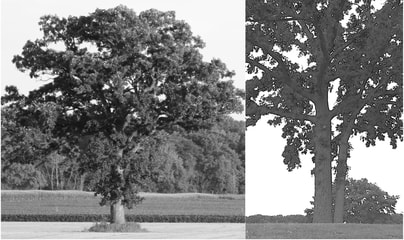 left: solitary oak with a single trunk. right: double trunk tree, which are actually two seperate trees growing next to each other. left: solitary oak with a single trunk. right: double trunk tree, which are actually two seperate trees growing next to each other. There are notable trees around the world that draw people’s attention for historic reasons or because they are sizeable. Old trees are respected as they can live for centuries and even millennia, providing us a connection to our ancestors. Some of us are drawn to the tallest and largest tree of a particular species. We might be interested in knowing which tree is the oldest, the tallest, or the largest in the world. These may seem like simple questions with straight-forward answers, but we do need to dig a little deeper when looking for the answers. What is a Tree When you think of a tree, do you picture a tree with a single trunk that divides into larger branches forming the crown? Some trees appear to have a couple trunks emerging from the same point at the ground. Trees like this could be the same tree or possibly different trees that are growing immediately next to each other. If you are interested in measuring the tree, you’d obviously need to determine if it is in fact a single tree. Most trees we come across are individual trees with a single trunk. This is the form of the trees we usually have in mind when talking about the oldest tree, tallest tree, and largest tree. Oldest, Tallest, Largest The oldest known trees are Great Basin bristlecone pines. One of these trees known as Methuselah, grows in the White Mountains in California and has been aged over 4,850 years. This tree is often recognized as the oldest tree in the world, yet there is another one nearby that has been estimated to over 5,070 years. Stay tuned as an alerce tree in Chile was estimated last year as close to 5,400 years old (Is This the Oldest Tree in the World - LiveScience). Regardless of which one is truly the oldest, all three of these trees are remarkable beings that have survived for 5 millennia. The tallest known tree in the world is a coastal redwood known as Hyperion, measured at over 380 feet in height. Coastal redwoods grow along the Pacific coast of northern California into southern Oregon. While the tallest tree measurement focuses solely on the height of the tree, when looking for the largest tree, we are looking at total volume of the tree (which brings in height as well as width of the tree's trunk, branches, etc.). The General Sherman Tree, a giant sequoia in Sequoia National Park, is currently the largest known tree in the world. To qualify, this title of largest tree is in relation to the measured volume of its trunk and crown. The amount of space this individual takes up is impressive, standing roughly 275 feet tall and its trunk measuring over 36 feet wide at the base. To give perspective of the size of The General Sherman Tree, the climbing area we flag off under our climbing trees is often 35-40 feet wide. Likewise, most of our climbing trees are 65-70 feet tall; which at that same height above ground, The General Sherman Tree's trunk is still about 15 feet wide. It is an impressive tree, but could there really be a tree larger than that?  aspen stand - nationalforest.org aspen stand - nationalforest.org The Tree is the Forest All the trees mentioned so far are single-stem species; also referred to as non-clonal. Looking underground, you can view these trees as a root system that gives rise to a single trunk. Again, there are instances where another stem or stems my arise, but they originate from the same general point of the root system. These new sprouts/stems/trunks can lead to a multi-stemmed tree whose life continues even after the original trunk dies off. This is a phenomenal characteristic that can extend the tree’s existence. Clonal species, in comparison, send up multiple stems/trunks from the same root system, but at different locations along the root system. Above ground you might see several trees or individual trunks growing in an area. While it might appear that you are standing in a grove or grouping of different trees, they are in fact all part of the same tree. One large root system with multiple trunks. One tree. When we bring clonal species into the mix, it's no longer a straightforward answer to the question of what’s the largest or oldest tree! 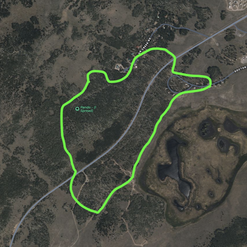 approximate outline of the outer edge of Pando's spread in Utah approximate outline of the outer edge of Pando's spread in Utah Meet Pando Quaking aspens are one of the more widely known clonal trees that you may be familiar with. As with many clonal tree species, a single quaking aspen tree can have 100’s-1,000’s of trunks all generated from the same root system. While one of its individual stems may not be all that impressive in terms of the thickness of trunk or height, the overall spread of the tree can reach out over acres. It may leave you wondering, can a clonal tree's many smaller stems even come close to measuring up against the total volume of the massive giant sequoia? Pando, meaning “I spread” in Latin, is a quaking aspen in south central Utah. This organism’s root system has over 47,000 stems/trunks and spreads out just over 100 acres. It grows across an area about the size of 80 NFL football fields! The volume in all of Pando’s trunks and crowns exceeds that of The General Sherman Tree. Now who’s the largest tree? You may not see that as an apple-to-apple comparison, but hopefully it puts things in perspective. I am truly impressed by the size of both trees. Standing in the midst of a humongous clonal tree like Pando or at the base of The General Sherman Tree, I feel infinitesimal. Both are the largest known trees in the world; one the clonal giant, one the single-trunk giant. You’re Only as Old as You Feel
Clonal species continue growing and generating new stems while older stems are dying off. This can result in the tree living far longer than any single stem. Aging trees can be difficult, particularly when you are dealing with a clonal species like quaking aspen. The trunks decay relatively quickly after dying, therefore aging relies on methods beyond counting growth rings or measuring trunk diameter. At the oldest end of the range, Pando most likely germinated after the last glacial period in the area. Scientists who study quaking aspen, estimate Pando’s age somewhere between 8,000 and 12,000 years old. Does that make Methuselah and its unnamed neighbor feel young? I am in complete reverence standing in the presence of any of these trees. Regardless of how deep I like to dive into any one tree or metric, I appreciate the ambiguities that arise from the seemingly simple question like, what is the largest tree? Look For Yourself Big tree hunters are in constant search of the oldest, tallest, and largest trees. Some will travel the world on this quest. Others may focus their efforts on the trees within their state or on a specific tree species. Whatever metric you are drawn to, there are many noteworthy trees in each county, state, and region. If you are amazed by the age of Pando, I encourage to look into Old Tjikko in Sweden and the wollemi pine in Australia. If height impresses you, maybe read up on tuliptree as it is the tallest known native deciduous tree species in North America. The Montello Cottonwood is a Wisconsin tree worthy of a visit as the tallest known tree in the state. If you admire overall size of a tree, the largest known bur oak growing in Wisconsin is at Stone Fences Farm in Dousman. The vast majority of those who have climbed with us have been through a Rec Climb, Open Climb, or private climb. We love these climbs as they are where most people are introduced to the excitement and reward of climbing tall trees. If you have climbed, you likely reached a point where you were energized by the feel of being high above the ground. This height is quite variable depending on the person, and of course there is much more to experience up there in addition to the distance you are above the ground. Many climbers love the feel of making it up to the branches. For some, just reaching them or touching them is enough. Others like being able to pull themselves over to sit on them. Some have a level of comfort that allows them to stand on a branch and even swing off of them.  Climbing in a Park Near You There is plenty of excietment to be had, even if you return time and again to the same tree; as many of you do with our Rec Climbs in your local park. This is part of the reason why we partner with numerous municipal Rec Departments, to introduce and make the recreational tree climbing experience accessible to as many people as we can. Most people have never seen or heard of climbing tall trees until they saw it in their Rec Department's Activity Guide. Some happen upon us during a stroll in the local park. However you first learned of us, our Rec Climb programs likely played a part with you and your children's introduction to this wonderful activity. 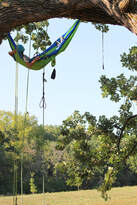 Climber relaxes and enjoys the view during an Open Climb Climber relaxes and enjoys the view during an Open Climb Branching Out Into New Trees We offer our Open Climbs so returning guests can change it up and enjoy climbing in a different tree. Not only do we pick our favorite trees for these climbs, we get to share the experience of hammocking high above the ground. We meet a large number of new climbers at these climbs as well given they are offered on weekends (Rec Climbs primarily offered on weekdays). Under the guise of just another fun thing to do while tree climbing, the hammock actually adds a level of challenge as getting in and out of it while hanging on rope further engages a climber's problem-solving and creative thinking skills. Since our Rec & Open Climbs are open to the general public and do not require experience, our procedures and the situations can be limiting to some climbers.  This advanced climber took advantage of the opportuntiy to climb the facilitator's rope to the top of the tree. This advanced climber took advantage of the opportuntiy to climb the facilitator's rope to the top of the tree. Out on a Limb Our Open-Advanced Climbs cater to people who have already climbed with us. This means that you are likely sharing climb-time with others who have worked through the initial fears and learning curve that limits first-time climbers. Open-Advanced Climbs attract participants who have really taken to the climbing experience and want to do even more up there. Climbers who are more comfortable at-height, would like to try new challenges, and excited to expand our movement around the branches. There are participants who are still working through fears of heights or maybe simply enjoy swinging. The common factor among the participants who come to these climbs is to take advantage of the longer sessions and not having to wait in line. There are more ropes than climbers, fewer people, and everyone has climbed with us previously. That enables us to allow climbers to try advanced challenges and more movement - like walking out further on a limb. We can even have a climbing guide in the tree to help participants work on various skills next to each other. Professional climbers enjoy much more movement and freedom when climbing, whether reaching higher points or more lateral movement and use of the climbing knot. Each month we offer up a new experience that we cannot allow in Rec & Open Climbs. Former students of our learn-to-climb classes are often in these climbs as well, working on the same skills; which makes for an exciting dynamic! Aspiring climbers of all levels, enjoying tree-time together. Each person focussed on their personal experience and intention for the day. For me, these types of experiences are what make the climbing experience more enjoyable, provide greater connection to the tree, and promote personal growth. If you or your child have climbed with us before & would like to continue to pursue the many benefits and rewards of climbing trees, I encourage you to learn more about our Open-Advanced Climbs. They are a great option for those who are too young learn to climb on their own and those not ready to make the investment in the equipment. Many of us feel a sense of admiration and adoration when we look upon an old or exceptionally large tree. Given many tree species live to ages well beyond human life expectancy, they can provide a connection to something larger than ourselves such as our ancestors, our moment in time, and our place in Nature. It is natural to have respect for our elders as they played a part in getting us to where we are today. The same can be said for the respect we have for old trees and old-growth forests given the many benefits we receive and role they play in healthy environments and ecosystems. A common question I am asked is, "how old is that tree?" Having studied and worked with trees for over 30 years, you’d think I’d be able to rattle off an age about as quickly as I can identify the type of tree it is. However, estimating the age of a tree simply by looking at it is nothing more than an educated guess at best, and we usually aren't privy to its growing conditions throughout its life. There are 3 primary ways we can estimate a tree's age. Two involve counting the annual growth rings and one uses a mathematical formula based on tree size. Counting tree rings tends to be more precise as size is not a reliable measurement eventhough trees generally get larger with age. However, this third method can often get us in the ballpark (albeit a rather large park). Having an idea of a tree’s age opens up the potential for admirers to build connection to and respect for some of Nature’s most amazing organisms and why I don’t mind engaging in the conversation.  An increment borer is a tool used by professionals who wish to view the annual growth rings of a tree. The tool is in essence a long metal tube with spiral teeth on the outer side, allowing it to be screwed into the trunk. Being a hollow cylinder, a “straw” or wood rod is captured inside the tube. When we remove this straw/rod, we have a cross-section of the growth rings. If you screwed into the center of the stem, you then have a rod that includes all of the growth rings. Not only can these rings be counted to help us determine the age of the tree, but also hold quite a bit of information that can be studied in order to help us look back in time.
Of course we don’t always hit the center of the stem. If your borer isn’t long enough to reach center, you miss the center, or should the middle of the tree be hollow, your extracted straw will not have all of the growth rings. In these instances, we may still be able to extrapolate the estimated age of the stem through calculating the average annual growth rate of the rings you did capture. Researchers, educators, and some tree fanatics will spend the money on this specialized equipment. The exact age of a tree has little impact when it comes to prescribing health related treatments, which is why this is not a standard piece of equipment used by arborists and related professions. Just Tell Me the Answer Since a tree’s age is a metric that often appeals to the general public and tree enthusiasts, there is another method that can be used to estimate ages. If we measure enough trees of a specific species, an average annual growth rate can be calculated for the species. Thanks to numerous research studies, this data has been used to generate growth factor values for a number of common tree species. This growth rate value is used in the following formula to estimate tree age: Growth Factor x DBH = Age The Growth Factor is basically the number of growth rings a species puts out per inch of trunk growth. The slower a tree grows, the more growth rings per inch, thus the higher the Growth Factor number. Faster growth leads to wider growth rings, therefore the Growth Factor will be a lower number relative to the size of the trunk (i.e. fewer rings per inch). DBH stands for “diameter at breast height”, which is a common measurement used when working with trees. In the most straight-forward of situations, the diameter, aka width of the trunk, is measured at 4.5 feet above the ground (breast/chest height). 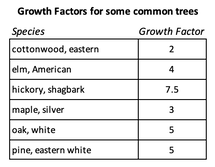 Utilizing the Gorwth Factor chart and formula above; if you have a 10” diameter silver maple, your tree is likely to be about 30 years old (3.0 growth factor x 10”dbh = 30 years age). Remember, this only provides an estimate based on the average growth rate of silver maple. Depending on the growing conditions it developed under, I wouldn't be surprised if this tree is 20 years or even 50 years old. If the tree has been growing under fertile and ideal conditions, then growth rate can be greater and the tree younger in age. If the tree is growing under stressful conditions or in poor soil, then its rate of growth will be slower and an older age. (We'll look at an extreme example of this shortly!) To further complicate the matter, a tree is likely to experience years of greater growth and periods of slow growth throughout its lifetime. For example, trees that have a new home built next to them where construction equipment caused soil compaction to its root zone are likely to experience a period of slowed growth. The duration and extent of this negative impact is unknown in most cases and an example of why the formula method can only aid us in guess-timating a tree’s age. These examples are not meant to cause confusion, but rather aid in understanding why there can be such great variance when estimating age solely by tree size. Such variables can be taken into consideration when we are aware of them. When considering such variables, I typically offer an estimated age range that may span 25-50 years or more. If a ballpark estimate is good enough to satiate your curiosity, use the formula. 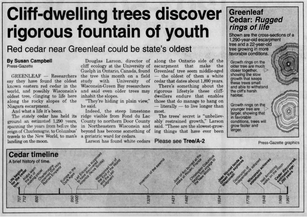 Click image to read more about the discovery of this tree. (External link to Wausau Daily Herald) Click image to read more about the discovery of this tree. (External link to Wausau Daily Herald) Growing Older But Not Up If trees get larger as they age, it may stand to reason that the largest trees are likely the oldest trees and vice versa. This is not usually the case, so let's consider this example. The oldest known tree in Wisconsin has been estimated close to 1,300 years old. (An increment borer was used for this estimation.) It is an eastern red cedar (Juniperus virginiana) with a trunk only 10 inches wide (10" dbh). This tree is growing on the side of a cliff. Growing out of cracks in the rock face is not exactly the best soil conditions for any tree, yet this tree has been able to survive while putting on very little growth per year. This demonstrates that the site conditions a tree is growing in can greatly influence its rate of growth considering an redcedar growing in ideal conditions could likely grow to a 10” diameter trunk within 50 years. This is in large part why trying to guess a tree’s age simply by looking at its size can be less than precise and why some professionals decline to provide age estimates. Is Age Just a Number I have enjoyed time amongst trees that sprouted in each of the last 4 millennia. I regularly visit a 200-250 year old bur oak, spending time in its branches thinking of all the changes it has seen in its lifetime. While we may not need to know the exact age of the tree, it is neat to be able to have an idea of how old a tree may be as knowing its age often instills a sense of admiration and connects us to previous generations and our point in history. A bur oak, not far from my house, recently had a large stem removed, revealing a 125-year history and an opportunity for reflection. Photos borrowed from:
Cold temperatures, shortened daylight hours, and lack of greenery can fool anyone into thinking there isn’t much reason to head outside in winter. It may seem like life and Nature have hit the pause button. Don’t be fooled. There is a lot going on out there! With less foliage present in the winter, there are many characteristics that become more apparent and less obscured by the sensory overload during the growing season. If you are not sure of what you are looking for, all you need to do is get out there and let your senses be the guide. SIGHT Fall leaf color is one of the more noticeable aspects of trees that people enjoy. One study estimated a 30-billion-dollar annual contribution to the tourism industries of the 24 states in the eastern U.S. alone. While the fall color change can be enjoyed through the windshield, there are many more details to enjoy when you slow down and spend time in the presence of a tree. Branches twist and wind their way to openings where their leaves can capture sunlight. This winding nature of the branches leads to an artistic framework. The abstract patterns can be enjoyed from a number of angles and perspectives, such as when winter leaf drop exposes the branching structure of deciduous trees. Bark color and textures vary greatly between species. River birch’s bark layers peel and curl along the trunk, revealing salmon colored inner bark. This attractive coloration and unique look make it a popular tree in landscapes. It may take on added winter interest if you do a little reading on a potentially useful characteristic of birch bark. Birch bark contains a compound that repels water, keeping the tissue dry. It is also flammable. A perfect combination when needing to start a campfire. 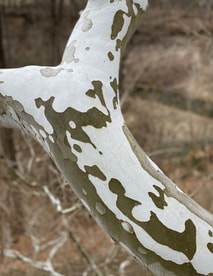 Sycamore's unique bark pattern Sycamore's unique bark pattern I particularly enjoy the texture, colors, and patterns of sycamore bark. The flaking bark leaves behind an evolving camouflage pattern formed as the green, gray, and tan papery layers exfoliate to reveal bright white inner bark on stems. In late winter, as we begin to anticipate the coming spring weather, the tiny leaf buds begin to swell and provide an early hint of the colorful season to come. This slight coloration is seen in the tops of the trees, contrasting against the brown and gray branches and blue skies. As winter draws to a close, we can enjoy the hint of red atop silver and red maples as well as the vibrant yellow cast along weeping willow twigs.. TOUCH In Wisconsin we are fortunate to have northern white cedars. They make my personal top-ten list of favorite tree barks! As northern white cedars age, their bark shreds into thin linear strips that run up and down the trunk. It has a slightly spongy feel in the outer layers of bark if you press into it with your fingertips and feels soft to the touch as you run your fingers along. There are numerous areas where we can get out and enjoy northern white cedar across Wisconsin, with one of my favorite areas being Newport State Park in Door County. Closer to my home in Waukesha County, Retzer Nature Center has a few groves of cedars around the park, one of which forms the centerpiece of the parking lot. Even your feet will notice the soft, cushiony feel of the leaf litter blanketing the ground under a grove of northern white cedar. You can enjoy their bark at any time of year, but spending time with them in winter has far greater impact for me as they maintain their green foliage through the winter. Immersing myself in a canopy of green when brown and gray dominate the winter color spectrum is like a breath of fresh air. SMELL I can seldom pass on the opportunity to bend down and smell a flower in bloom. Some have little to no fragrance. Some are enjoyable and others might not be so pleasant. Regardless, the experience of stopping to smell the flowers pulls me into the present moment. Even with the lack of flowers in the winter months, there are a few trees that I have a hard time passing by without taking in their pleasant fragrance. Some may have soothing effects and others I find energizing. 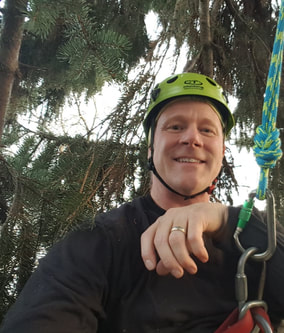 Nestled in the branches of a spruce, immersed in the pleasant scent Nestled in the branches of a spruce, immersed in the pleasant scent Several of our coniferous evergreens stimulate my sense of smell on winter hikes. Northern white cedar and eastern white pine are two of my favorites. Hemlock and spruce also do the trick. Walking near any one of these trees is likely to awaken your sense of smell. One place I enjoy immersing myself in these aromatic compounds is along the Ice Age Trail in Hartman Creek State Park. As the trail winds through rolling, forested terrain of oak, pine, and maple, you pass through pockets of spruce & hemlock. Even if you are not able to identify them by name, your nose will surely let you know it is time to slow down and breathe it all in! The essential oil and aromatherapy industries promote these compounds for their beneficial effects on us; like relaxation, invigoration, enhancing concentration, decreasing hyperactivity, reducing stress, easing tension, and clearing the mind. I use them in diffusers at home and in my office; but they are no substitute for heading out and enjoying them right from the source! SOUND I enjoy the distinct crunching sounds underfoot during a winter hike. Whether the trail is lined with fallen oak leaves or covered in freshly fallen snow, neither of these unique sounds were something I experienced while growing up in Puerto Rico and southern Florida. Another one of the sounds I go in search of in winter leads me to stands of eastern white pine. Not only does the foliage dampen the stark sounds from traffic and other noise pollution sources, the fine and feathery texture of the needles emit a soothing “whoosh” as the breeze passes through. Pair this calming sound with the soft texture of the needles and pleasant aroma and you may be able to understand why sitting on a branch near the top of an eastern white pine is one of my favorite places to be! TASTE Tastes related to trees is most readily appreciated by tasting the fruits, seeds, and nuts. Therefore, this sense is more commonly enjoyed during the growing season as opposed to winter. One of my favorite tasting experiences was the day I sat along the bank of a tributary to the Des Moines River in central Iowa. I was sitting amongst a stand of black walnut trees in late summer as leaves and walnuts fell around me. I’ve never cared for store bought walnuts (which are English walnuts), yet given the abundance of nuts I decided to try one. It was the best tasting nut I’ve ever tasted. The tenderness of the nut and the bold flavor, wow! I spent the afternoon feasting upon freshly fallen nuts and watching the river flow past as the sun sank closer to the horizon. Since most of the edible fruits have fallen, rotted, or been consumed by animals come winter, I resort to enjoying a variety of tastes from various twigs. Some species have a distinct taste and often used by knowledgeable professionals as an aid in identification.  Crushed leaves and bark of younger twigs has a pleasant aroma of Froot Loops! Crushed leaves and bark of younger twigs has a pleasant aroma of Froot Loops! Black or sweet birch is known for its wintergreen taste, black cherry for its somewhat cherry or almond-like taste, and sassafras has flavors of spiced fruit. Since some of these species may also contain low levels of toxic compounds when ingested, you may opt for the alternative experience of scraping the bark of fresh twigs to reveal the aroma. Sassafras has a fruity aroma like that of Froot Loops! Using the sense of taste should be approached with caution. Even if a particular plant is known to be edible, it may still contain toxic compounds, certain people may have a sensitivity, or there may be similar looking plants that may be toxic. SENSORY JOURNEY
While we may spend more time indoors during the winter months, there are plenty reasons to get out and enjoy the season. If not just to get out in the sunshine or bathe in the green colors of pines, spruces, and other evergreens, I'm also drawn outside to witness the unique aspects visible in winter and appreciate the different experience they provide. Acknowledging and engaging in the changing of the seasons helps to build layers of memories, can strgengthen your emoitonal attachment to a place, and grow your appreciation of life. There are a few of reasons why certain trees are special to me for climbing. Sometimes it is for the connection I feel to the tree, a particular challenge it may present for climbers, or because it provides an experience unique for those who head into the treetops. I am often asked if I have a favorite tree to climb. It's hard to narrow it down to a single tree, but here are four of them and what I enjoy about them. Each year I select a number of these favorite trees for our Treetop climbs (Open, Open-Advanced, Adult, and Girl Scout Open Climbs). Here's why they are special to me and may help you decide if you'd like to climb it with us. Pearl 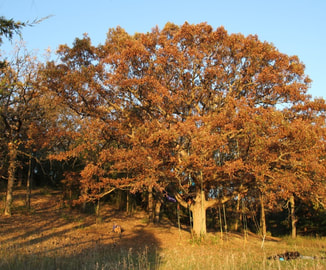 Pearl in fall Pearl in fall Pearl is one of my favorite trees. Growing at the base of a ridgeline formed during the last glacial period, this white oak is one of the older trees in the stand of oak & hickory overlooking the restored prairie. While understory plants have filled in the oak savanna that stretches the length of the ridge, park management is returning the area to the splendor of the natural savanna and prairies common to southeast Wisconsin in it's pre-settlement days. (Pearl is our climbing tree in Mukwonago Park) Having grown in open sun in its younger years, Pearl has developed a broad spreading crown with numerous large branches, an eye-catching form, and a broad trunk that is firmly rooted in the fertile soil. The number and span of the branches are part of what make this tree an enjoyable one to climb. There are several branches to explore and plenty of comfy spots to lay your head back and enjoy the hours pass by. 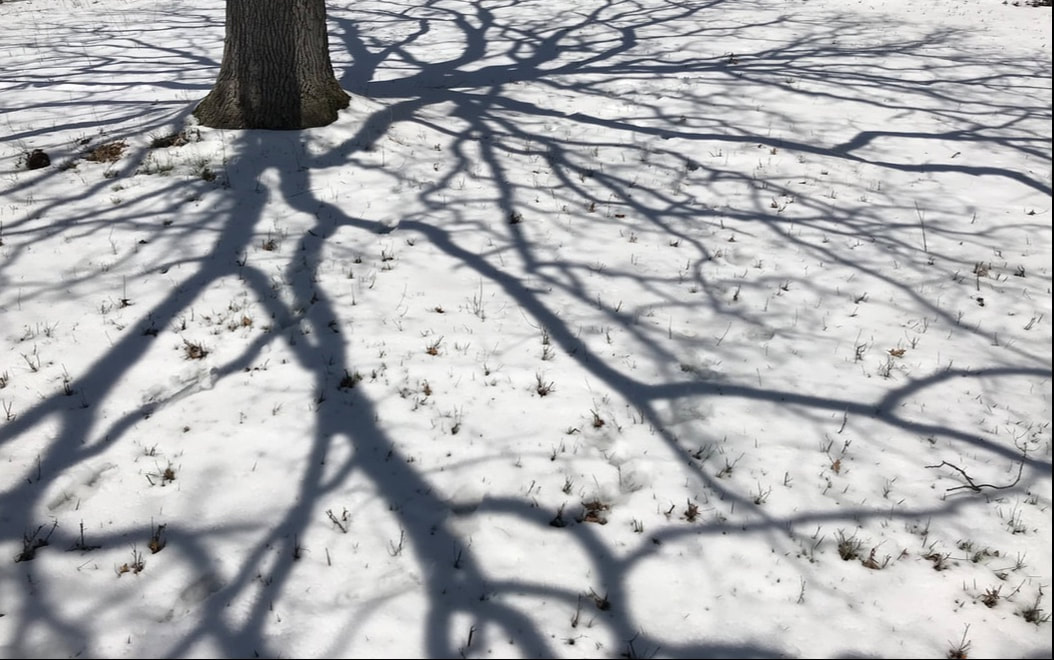 Pearl branching structure Pearl branching structure Taking time to look at the other mature trees along the hillside surrounding you, you can still make out the structure of the savanna before the understory and invasive plants crept in. Climbing late in the day may provide the opportunity to enjoy the rays of the setting sun. Winter climbs are a treat when the sun casts shadows of the weaving branches on the ground below. After taking time to play in the branches, you can head to a special place at the top. A fork in the branches at the very top form a small cradle that you can stand in, placing your head within feet of the uppermost leaves. Looking south, an opening in the branches provides a window where you can take in the view of the horizon. That is one of my favorite places to be in Waukesha County. The Woodfield Oak Since first meeting this tree in Woodfield Park after moving to Waukesha over 20 years ago, I have returned regularly to sit in its shade. It has often served as a place to quiet my mind and enjoy my lunch break. The form reminds me of the live oaks that grow in the Southeastern U.S. with their sprawling branches. It is about 55 feet tall and the branches reach out about 85 feet from tip to tip! Two large lower branches scoop down to the ground, ready to embrace you like outstretched arms. It is a special tree…and why I have not found the right name for it yet! The tree is upwards of 200-225 years old. Having sprouted from an acorn in the late 1700’s to early 1800’s, this tree was already a modest sized tree by the time Wisconsin became a state in 1848. With broad spreading horizontal branches, this tree is a favorite amongst climbers as they allow for long limb-walks and great for taking big swings on your rope. Since peoples’ comfort with heights varies, I love introducing students and public climb participants to the tree as there are great branches to practice skills or play from 7 to 40 feet above the ground. As the crown spreads and trunk heads towards the sky, two main stems form to provide a pair of high points in this tree. Reaching the top of either one, you will find yourself standing with your head near the uppermost leaves of this amazing tree. Captain Tony Fox Brook Park features a number of beautiful bur oaks & our particular climbing tree grows near the bank of the lake. Captain Tony is a great tree, providing shady branches to get out of the summer heat and enjoy refreshing views of the swimmers and kayakers on the lake below. With an upright trunk that forks into a few limbs, there are some great spots where you can pause and explore. Some of the branches allow for swinging and a taste of moving about the branches.  Kicking back in Captain Tony Kicking back in Captain Tony Captain Tony has a nice trunk route, which is when your climbing rope hangs down alongside the trunk. I enjoy trunk routes because I can touch the large limbs, feel the bark, and form a closer connection to the tree. For many climbers the challenge presented by being against Captain Tony's trunk may prevent them from making it past a particularly tight spot on the way up. Those who are able to adjust their ascent technique, use the trunk to their advantage, or able to persevere with determination are able to get past this point. Once above it, you are rewarded with a chance to stand at the point where the large limbs begin to form the crown. Standing there, energized and beaming with satisfaction, you will look up to find a clear route to the top. Watching others successfully make it past that difficult spot and seeing them beam with pride for the accomplishment is a highlight of the day for me. A Boost Up It is not always about finding the tallest tree to climb. Most of the time I am looking for an experience or something unique a tree may provide. The swamp white oak in Horeb Spring Park is a pretty tall tree for our area, but where it is growing provides something that all climbers can experience regardless of how high we like to or are able to climb. The tree grows on a hillside that makes for a popular sledding spot in winter. From spring through fall, this slope presents a unique experience for our climbers. As soon as your feet leave the ground & you are hanging on rope, the slope is no longer a concern for you. What it does do for a climber is change your perspective of height depending on the direction you are facing. Facing up-slope you can see the ground and may not feel anything different than when climbing trees on level ground. As you rotate and the view down the hill comes into your field of vision, you feel an interesting sensation of being higher than you actually are.  Hammocking at 20feet with the sensation of being about 40 feet from the ground Hammocking at 20feet with the sensation of being about 40 feet from the ground With trees growing at the bottom of the hill, when you look directly across to them you will be peering into higher points of those trees. Your senses will make you feel that you are just as high in your own tree. That sensation paired with the fact that you can still climb high in this tall tree will you give a boost of energy and allow you to check your comfort with heights. The sensation of feeling higher than you are is due to your orientation relative to the surrounding trees and landscape. This is something I look for when heading out to climb trees in the forest. Walking a ridgetop, I don’t necessarily need a tall tree, I just need a tree that can provide a view over or between the tops of the trees downhill. We often drive or hike to cliff tops to enjoy the view. With rope and saddle in hand, I just need to find a good tree on top of a ridge, cliff, or hill to get that extra boost above most people's perspective.. (Note: some of the experiences and climbing techniques described above may not be available at all Treetop climbs. Advanced techniques like limb-walking or multi-pitch climbing to get to the very top are covered in our Learn-to-Climb classes and introduced with modifications in our Open-Advanced climbs. Open Climbs feature a hammock.) 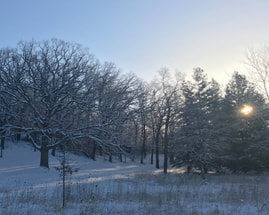 This time of year is interesting. Holiday, year-end, and new year celebrations abound. We find ourselves reflecting on the past in one moment. The next moment we are looking forward to the future. Outside, the cold has set in and often times we already have snow on the ground. Winter has arrived. When does winter “officially” begin? In meteorologic terms, it began December 1st. Astronomically speaking, it begins at the winter solstice. (Here's a great article about the seasons, solstice, equinox, aphelion, perihelion) At this point in our annual trip around the sun, the Earth's tilt has the northern portion positioned further from the sun than the southern hemisphere. Thus the reason the sun is lower in the southern sky rather than overhead during the middle of the day. This year, December 21st is the day where the tilt will reach its peak and begin to reverse. This pivot occurs at 9:59am on Tuesday, the winter solstice. I find inspiration in recognizing this day and moment as it means that we will start to see our daylight hours lengthening with each passing day. I love the cold and the snow, but can be challenged as there are days where I leave home before sunrise and return after sunset. By taking time to acknowledge the solstice, I am energized with positive emotions. I am aware of this specific point in the journey and in-tune with the present moment. Brighter days are ahead both literally and figuratively.  Where will you be Tuesday morning? I will be on the ground, but still outside amongst trees. I have picked out a trail with numerous pockets of conifers. WInter's color spectrum is dominated with browns and grays, which is why it is important to immerse myself in the greens of pines, spruces, cedars and hemlocks! Some people perceive winter as a long and dark time of the year. By taking time to celebrate the winter solstice, I am able to keep my focus on the fact that the amount of daylight is starting to increase. This lends itself to a positive mindset. Winter is the time to celebrate the daytime getting longer. Here comes the sun! After spending the past few weeks camping and hiking in various forests of the eastern U.S., I noticed marked differences in my demeanor and state of mind. Even with the sacrifice of physical comfort by sleeping in a tent rather than in our bed, I slept more soundly. I also noticed an improvement in mental clarity. In part this was due to the absence of the demands and distractions often encountered at home and work; but also from the peace that overcame me as I enjoyed the trees, sun, breeze, song birds, and sights in the forests and along the trails. We were immersed in nature. We felt great!  My wife and I spend a fair amount of time outdoors throughout the year. Whether it is taking trips like this, regular walks in the parks and trails near our house, or enjoying time in our backyard gardens, I know my time spent in nature nourishes my soul and has a positive impact on my health and well-being. Your personal experiences may be like mine and you also feel positive impacts from your time in nature. We hear about Nature providing benefits to our health and well-being, but are the claims real or do they just sound plausible? Sounds Good, Can You Prove It As it turns out, there are numerous studies that looked at and measured the impact of spending time in nature. There are also studies that looked at the human health impact when natural areas and trees have been removed from an area, as was the case in several communities who lost an extraordinary number of trees due to the invasive emerald ash borer. Those of us who have been aware of the positive impacts we experience may have been self-medicating by making time spent outdoors a regular part of our weekly routine. Obviously medical professionals need to operate on hard evidence rather than opinion, so thankfully this information has been making its way into the medical field and showing up in doctor’s prescriptions! Easier Said Than Done I am fortunate that my work schedule provides the opportunity for me spend time in nature most days of the week. Even my hobbies of walking, hiking, and gardening draw me outside. Thankfully my wife is able to motivate me to get outside to play, exercise, or simply relax when I have found myself content with sitting on the living room couch. With all the opportunities I have to get outdoors, I still look for assistance and guidance from professionals to help me maintain focus. A few years ago I found a health & wellness coach who has helped in my pursuit of a healthy life-style and other personal goals. With her expertise in health, wellness, and nutrition education & coaching, she has been great to work with and learn from in regard to the role that spending time in nature plays in her clients’ success. Recently she invited me to sit down with her and a colleague to discuss my experiences and our tree climbing programs. I know I need to be physically active and get outdoors, but that doesn’t mean I always have the motivation to move. What Does It Take to Get Me Outside My tips include:
As we discussed during our time together, part of the intent behind our tree climbing experience is provide a unique and exciting way to get outside, move, and connect with Nature. (The appeal of the climb lured her to join me in the tree for an additional segment you'll hear at the end of to the podcast)
With the energizing affect that comes with climbing tall trees, I hope it provides further motivation for participants to make spending time outdoors a regular part of their weekly schedule. 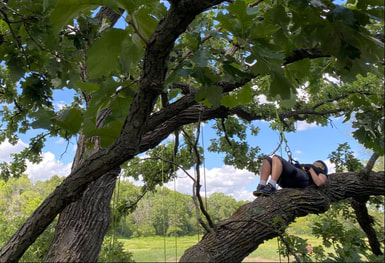 Where do you go to unwind, slow down, find peace? A walk at the end of the day helps to quiet my mind. My wife and I take weekend hikes which help us unwind and enjoy a peaceful morning together. Walking in parks lends itself to providing a calming effect after a busy day. Crossing paths with others is almost a given in these situations, and I enjoy the sense of camaraderie I feel as I nod to others who seem to be enjoying the same experience as me. However, there are times where I wish to be further removed. I like to find places that are accessible but where I may be one of the only people around. These days it is often that I need to hike further distances to get away from the more heavily trafficked areas. I don’t necessarily need to find a completely secluded spot, but it is nice to find a place where I can be alone for at least a short period. When I need further distance, I often find myself in the branches high above. Up there I usually only come across birds and squirrels. I have yet to cross paths with anybody while I’ve been climbing a tree. Energized yet at peace The energizing effects take hold as I leave the ground behind on my way into the branches. Once I reach my destination, be it the top of the tree or one of the many branches to sit on, I can focus my attention inward. The common city noises and chatter from others playing nearby may still be in earshot, but they are softened by the distance. Laying my head back on a branch and gazing into the canopy above, those distractions are gradually drowned out by the rustle of leaves in the breeze. This is when I notice that I have already begun to unwind and calm my mind. Up here I can enjoy the life in the canopy and the peaceful feelings that overcome me.  Taking it all in Sitting alone, looking down, you enjoy a view and perspective most people seldom have. It can feel like you’re floating above the daily grind and able to focus on the simple pleasures in your life. Back on the ground your worries and troubles wait for you. Up here though, those worries cannot reach you. You are free to enjoy your time alone. You can take the time to explore your thoughts and emotions. With your heightened energy level that comes with the location, you are likely to reconnect with yourself in a way that may escape your reach during the demands of your day. That’s how it is for me, which is part of what drives me to provide the opportunity for others to experience tree-time. Climbing tall trees is fun and why we offer the recreational experience. It is also therapeutic, and why I climb on my own or share a branch with a friend. |
AuthorAs a G.O.T.C. Recognized Master Instructor & Facilitator, I.S.A. Board Certified Master Arborist, and T.C.I.A. Certified Treecare Safety Professional, Curt has spent over 30 years dedicated to the study and care of trees. Categories
All
Archives
May 2024
|
|
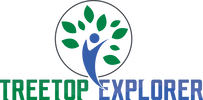




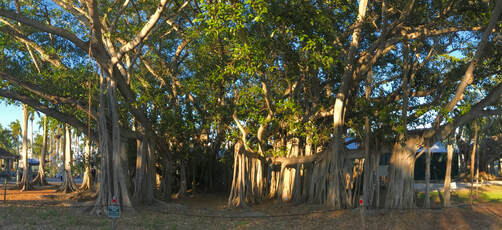
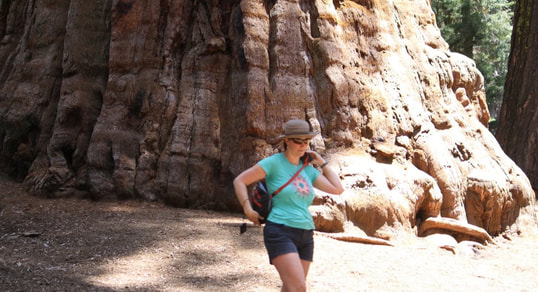
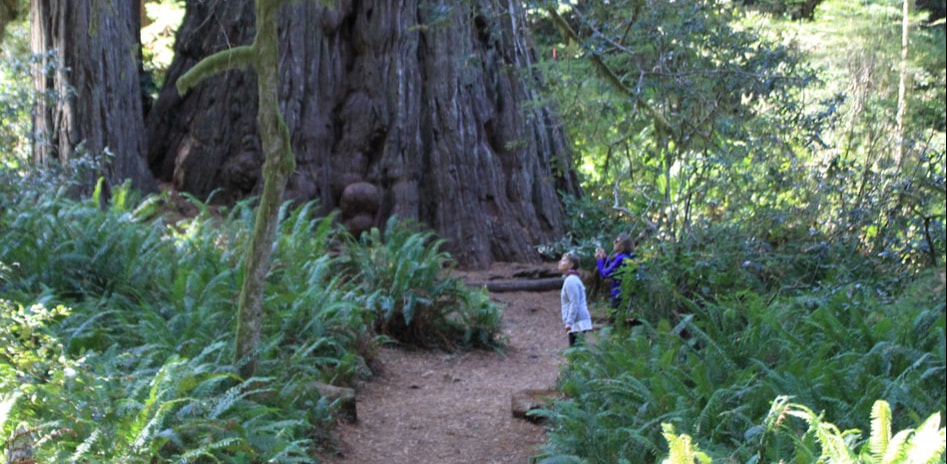



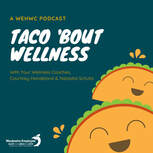
 RSS Feed
RSS Feed
